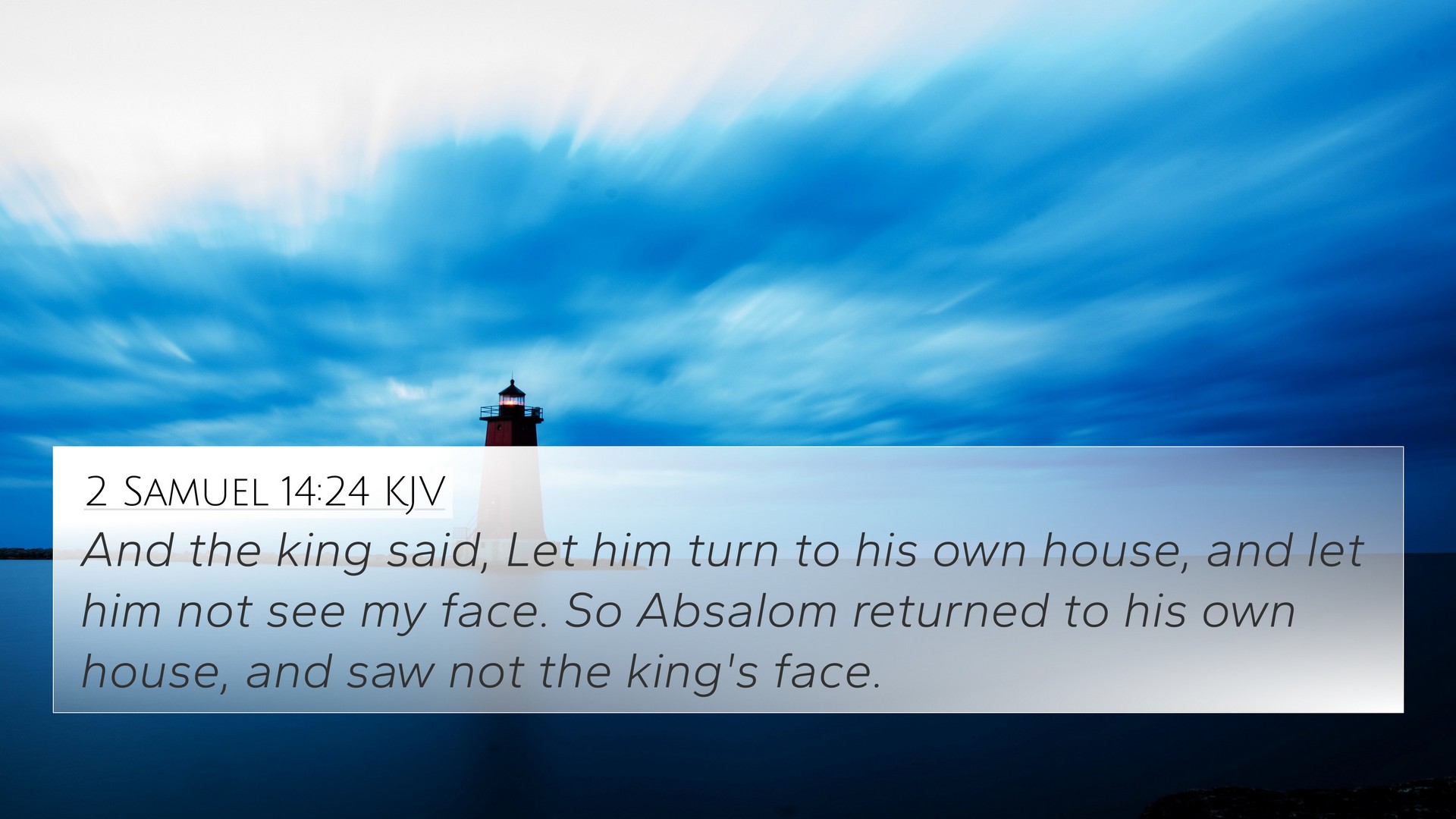Understanding 2 Samuel 14:24
2 Samuel 14:24 states,
"And the king said, Let him turn to his own house, and let him not see my face. So Absalom returned to his own house, but saw not the king's face."
Summary of the Verse
This verse describes the aftermath of Absalom's return to Jerusalem after being exiled for murder.
King David, his father, allows him back but enforces a separation, indicating unresolved tensions and the gravity of Absalom's previous actions.
Exegesis and Interpretation
The verse highlights key themes including:
- Restoration and Alienation: Absalom is given a degree of restoration but remains alienated from the king, symbolizing the complexities of familial relationships and forgiveness.
- Authority of the King: David's command illustrates his authority and the importance of maintaining order, emphasizing his role as a leader and father.
- Consequences of Sin: Absalom's past actions have far-reaching consequences that hinder his relationship with David, showing how sin can sever familial ties.
Connections Between Bible Verses
To understand this verse fully, we can consider several Bible cross-references that shed light on its themes:
- 2 Samuel 13:29 - The murder of Amnon by Absalom, which serves as the background for this situation.
- Genesis 45:7 - Another instance of reconciliation after wrongdoing, highlighting themes of forgiveness and familial responsibility.
- Luke 15:24 - The Prodigal Son, which parallels the themes of return and acceptance in familial contexts.
- Matthew 5:24 - The call to reconcile with others before presenting offerings to God, resonating with Absalom's need for restoration with David.
- Isaiah 59:2 - The separation caused by sin, reflecting how Absalom’s sin has distanced him from David.
- James 1:15 - The progression of sin leading to death, applicable to Absalom's character arc.
- Proverbs 14:9 - The folly of sin and lack of reconciliation, a moral insight relevant to the events surrounding Absalom.
Comparative Analysis of Themes
The exploration of loss and redemption as seen in the relationship between Absalom and David can be compared with numerous passages throughout the Bible.
These connections can guide deeper study using available tools for Bible cross-referencing, enhancing one's understanding of the narrative's emotional and spiritual gravity.
Tools for Bible Cross-Referencing
Engaging in a cross-referencing Bible study can enrich your grasp of scriptural themes.
Utilizing a Bible concordance or a cross-reference Bible study guide enables you to identify links between verses easily:
- Bible Concordance: A great resource to look up literary occurrences and themes across scriptures.
- Bible Cross-Reference Guide: Typically found in study Bibles, it links related verses.
- Cross-Referencing Bible Study: A method of examining contextual connections within the Bible.
- Bible Chain References: Allows for chain-link study from one verse to multiple related verses.
Concluding Thoughts
2 Samuel 14:24 offers profound insights into the dynamics of forgiveness, authority, and the consequences of sin within familial relationships.
By exploring other related scriptures, one can gain a comprehensive understanding of David and Absalom's complicated relationship.
For those curious about Bible verses that relate to each other in similar themes of reconciliation and separation, tools like
Bible reference resources and comprehensive Bible cross-reference materials can be immensely helpful.







